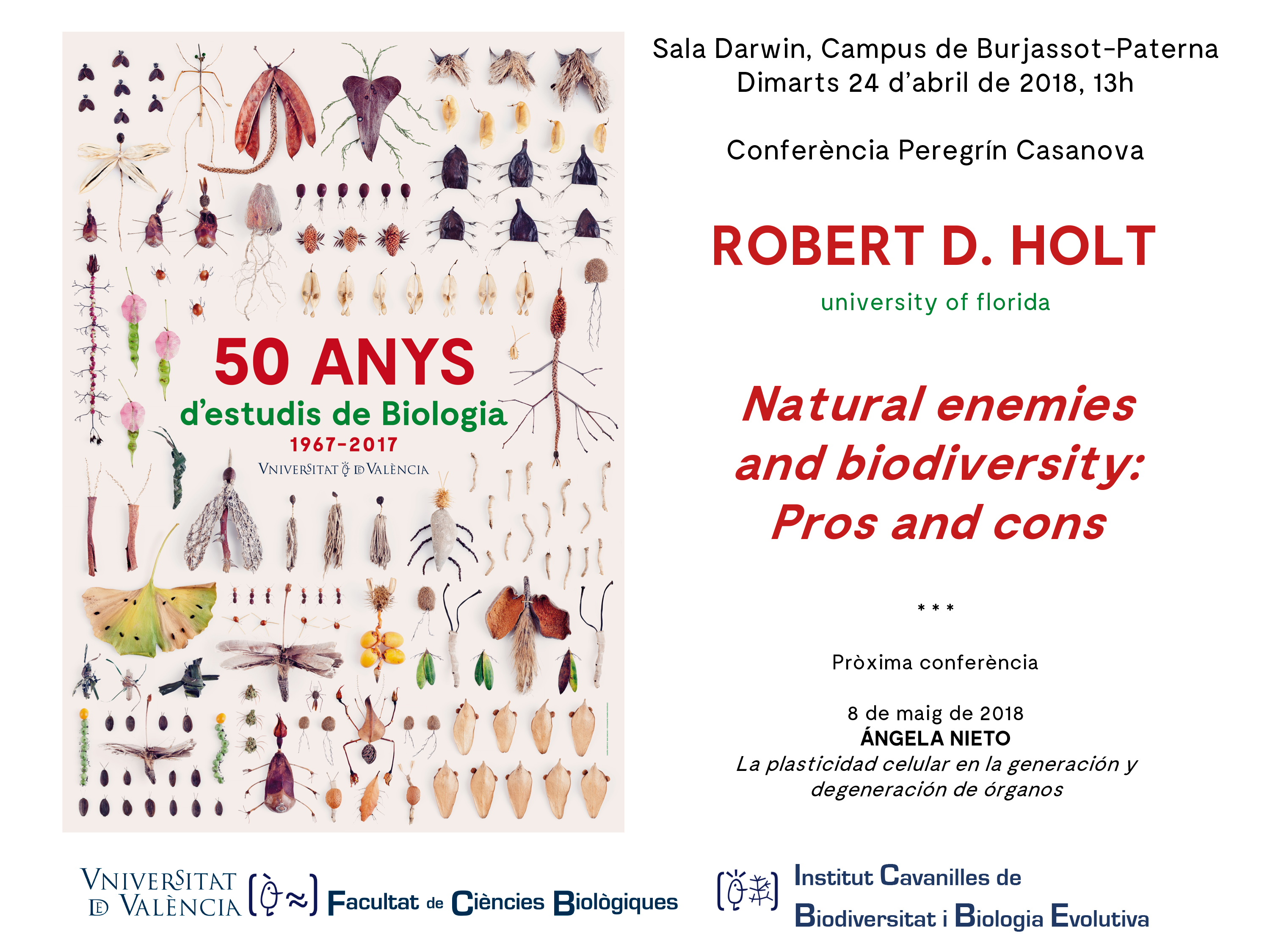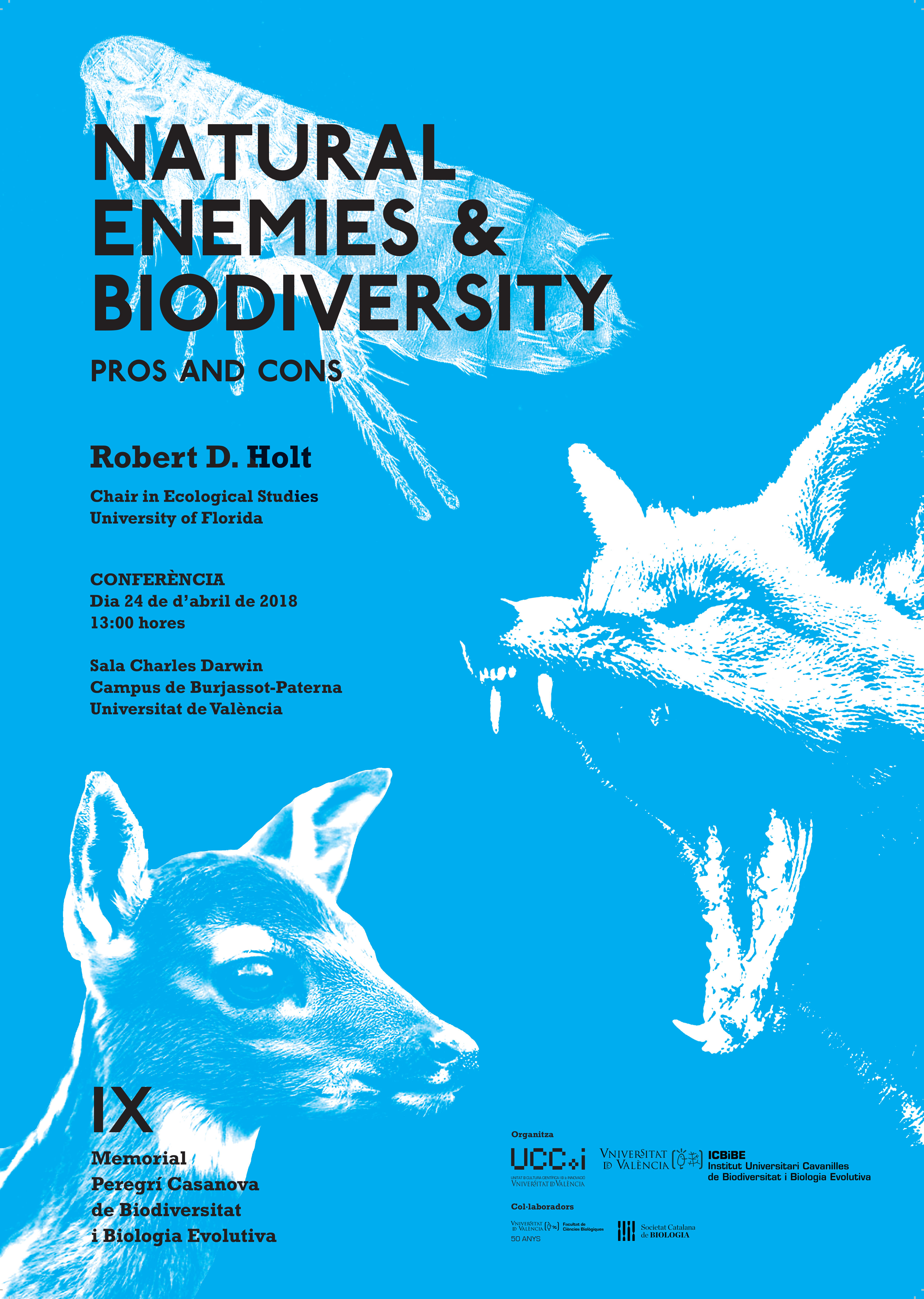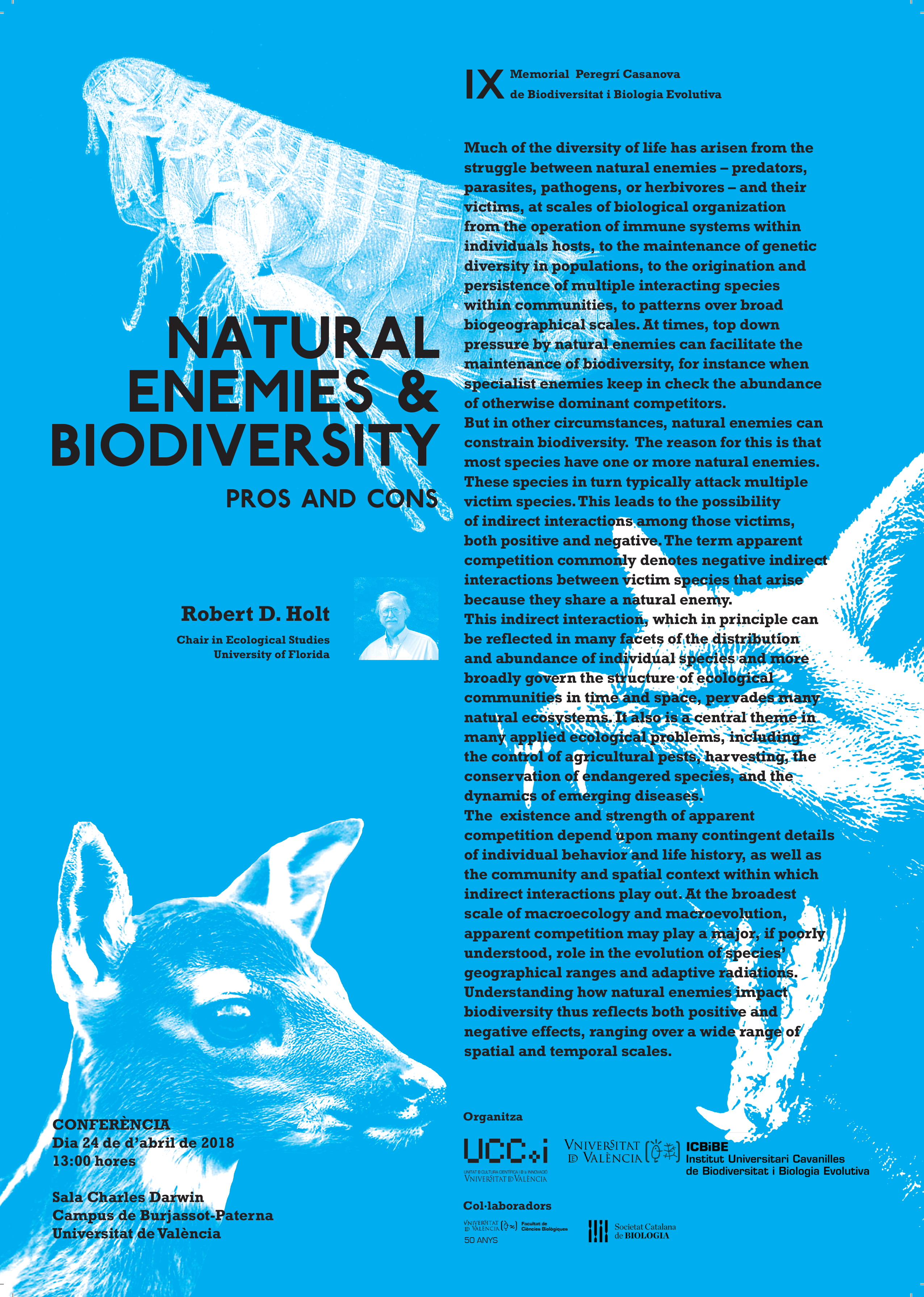
Next Tuesday 24 April 2018 at 13:00h Dr. Robert D. Holt - Chair in Ecological Studies, University of Florida - will be giving the conference: "NATURAL ENEMIES & BIODIVERSITY: Pros and Cons" within the IX Memorial Peregrí Casanova de Biodiversitat i Biologia Evolutiva and the celebration of 50 years of Biology studies.
The act will take place at the Sala Charles Darwin, Burjassot-València Campus, Universitat de València.
SEMINAR(i): NATURAL ENEMIES AND BIODIVERSITY: Pros and Cons
WHO?: Dr. Robert D. Holt (University of Florida)
WHAT?: The effects of natural enemy species on Biodiversity.
WHEN?: Tuesday 24/04/2018 – 13:00 h
WHERE?: Sala Charles Darwin (Aulari Farmàcia)
ABSTRACT:
Much of the diversity of life has arisen from the struggle between natural enemies – predators, parasites, pathogens, or herbivores – and their victims, at scales of biological organization from the operation of immune systems within individuals hosts, to the maintenance of genetic diversity in populations, to the origination and persistence of multiple interacting species within communities, to patterns over broad biogeographical scales. At times, top down pressure by natural enemies can facilitate the maintenance of biodiversity, for instance when specialist enemies keep in check the abundance of otherwise dominant competitors. But in other circumstances, natural enemies can constrain biodiversity.
The reason for this is that most species have one or more natural enemies. These species in turn typically attack multiple victim species. This leads to the possibility of indirect interactions among those victims, both positive and negative. The term apparent competition commonly denotes negative indirect interactions between victim species that arise because they share a natural enemy. This indirect interaction, which in principle can be reflected in many facets of the distribution and abundance of individual species and more broadly govern the structure of ecological communities in time and space, pervades many natural ecosystems. It also is a central theme in many applied ecological problems, including the control of agricultural pests, harvesting, the conservation of endangered species, and the dynamics of emerging diseases.
The existence and strength of apparent competition depend upon many contingent details of individual behavior and life history, as well as the community and spatial context within which indirect interactions play out. At the broadest scale of macroecology and macroevolution, apparent competition may play a major, if poorly understood, role in the evolution of species’ geographical ranges and adaptive radiations. Understanding how natural enemies impact biodiversity thus reflects both positive and negative effects, ranging over a wide range of spatial and temporal scales.
Llista d'enllaços:
Imatges:



















